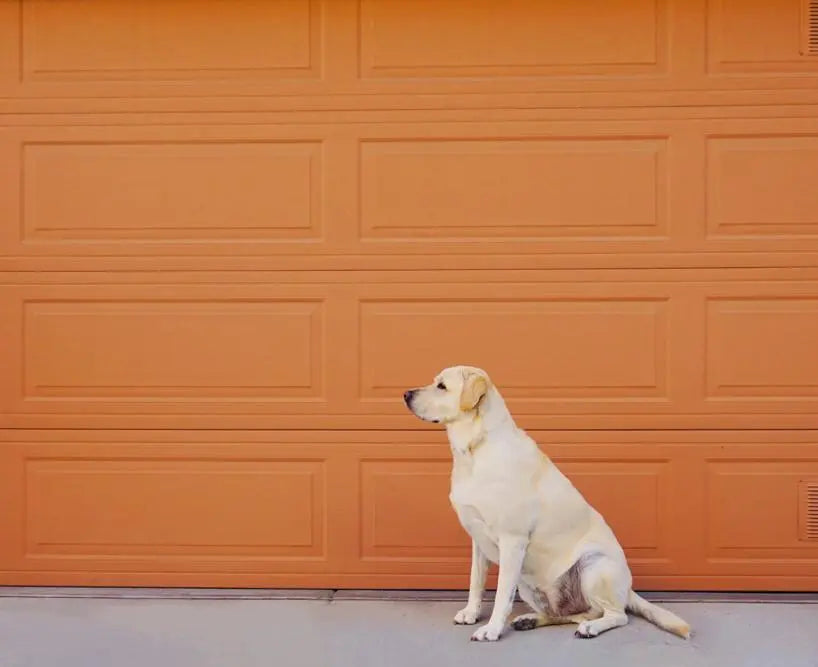Garage door sensors play a crucial role in ensuring the smooth and safe operation of your garage door. These sensors are designed to detect any obstructions in the path of the door and prevent it from closing, thereby preventing accidents and damage to property. In this blog post, we will discuss the importance of aligning garage door sensors and provide a step-by-step guide to help you align them properly. We will also address common issues that may arise with garage door sensors and when it is appropriate to seek professional help.
What are Garage Door Sensors?
Garage door sensors, also known as photoelectric sensors, are safety devices that are installed on either side of the garage door, usually near the floor. They consist of two components: a transmitter and a receiver. The transmitter emits an infrared beam of light, while the receiver detects the presence of that beam. When an object, such as a person, animal, or vehicle, interrupts the beam, the sensors send a signal to the garage door opener to stop closing or reverse its direction.
Why is Aligning Garage Door Sensors Important?
Proper alignment of garage door sensors is crucial for the safe and efficient operation of your garage door. Here are a few reasons why aligning garage door sensors is important:
- Safety: Garage door sensors are designed to prevent accidents and injuries by detecting any obstructions in the path of the door. If the sensors are not aligned properly, they may fail to detect an object, posing a risk to anyone or anything in the door’s path.
- Protection of Property: A misaligned garage door sensor can cause the door to close on an object, such as a car or a bicycle, resulting in damage to both the object and the door. By ensuring that the sensors are properly aligned, you can prevent such accidents and protect your property.
- Avoiding Malfunctions: Misaligned sensors can cause your garage door opener to malfunction. If the sensors are not aligned properly, the door may not close or open as intended, leading to inconvenience and potential damage to the door and its components.
Step-by-Step Guide to Aligning Garage Door Sensors
Now that we understand the importance of aligning garage door sensors, let’s take a look at a step-by-step guide to help you align them properly.
- Preparing the Area: Before you begin aligning the sensors, it is important to clear the area around them. Remove any debris, such as leaves, dirt, or cobwebs, that may be obstructing the sensors. Clean the lenses of the sensors using a soft cloth and a mild cleaner, if necessary.
-
Positioning the Sensors: Start by identifying the sensor units on either side of the garage door. One unit will have a red light (the transmitter), while the other will have a green or amber light (the receiver). The transmitter should always be installed on the side of the door that opens first.
- Use a level to ensure that both sensors are aligned horizontally. Place the level on top of each sensor and adjust their positions until the bubble in the level is centered.
- Once the sensors are aligned horizontally, adjust their positions vertically. The sensors should be installed no higher than 6 inches from the floor. Use a tape measure to ensure that both sensors are at the same height.
- Secure the sensors in their desired positions using screws or mounting brackets provided by the manufacturer. Make sure that the sensors are firmly attached and cannot be easily moved.
-
Testing the Alignment: After aligning the sensors, it is important to test their alignment to ensure that they are working properly. Here’s how you can do it:
- Close the garage door using the remote or the wall-mounted button. As the door is closing, wave a long object, such as a broomstick, in front of the sensors. The door should stop immediately and reverse its direction.
- If the door does not reverse, or if it reverses without any obstruction, the sensors may not be properly aligned. Repeat the alignment process and test again until the door stops and reverses when an object interrupts the beam.
Common Issues with Garage Door Sensors
While aligning garage door sensors can usually be done by following the step-by-step guide above, there are some common issues that may arise with these sensors. Here are a few of them:
- Obstructions: The most common issue with garage door sensors is the presence of obstructions in their path. Make sure that there are no objects, such as tools, toys, or debris, blocking the sensors. If the sensors are dirty, clean the lenses to ensure proper operation.
- Incorrect Positioning: Garage door sensors must be aligned both horizontally and vertically for them to work properly. If the sensors are not aligned correctly, they may not detect an obstruction or may give false readings. Follow the step-by-step guide provided earlier to ensure proper alignment.
- Poor Connectivity: Sometimes, garage door sensors may not work properly due to poor connectivity. Check the wiring connections between the sensors and the garage door opener. If there are any loose or damaged wires, repair or replace them as necessary.
Professional Help for Aligning Garage Door Sensors
While aligning garage door sensors can be a DIY task, there are situations where seeking professional help is advisable. Here are a few instances when you may need to hire a technician:
- Lack of Experience: If you are not confident in your ability to align the sensors properly, it is best to leave the task to a professional. Improper alignment can lead to accidents, damage to the door and its components, and malfunctioning of the garage door opener.
- Time Constraints: Aligning garage door sensors can be a time-consuming task, especially if you are not familiar with the process. If you do not have the time or patience to align the sensors yourself, hiring a technician can save you time and effort.
Conclusion
Properly aligned garage door sensors are essential for the smooth and safe operation of your garage door. By following the step-by-step guide provided in this blog post, you can align your sensors correctly and avoid accidents and damage to property. Remember to test the alignment of the sensors after installation to ensure that they are working properly.
In case you are not confident in your ability to align the sensors, it is advisable to seek professional help from companies that provide professional alignment services. Properly aligned garage door sensors not only enhance the safety of your garage door but also prolong its lifespan.








Reader Interactions